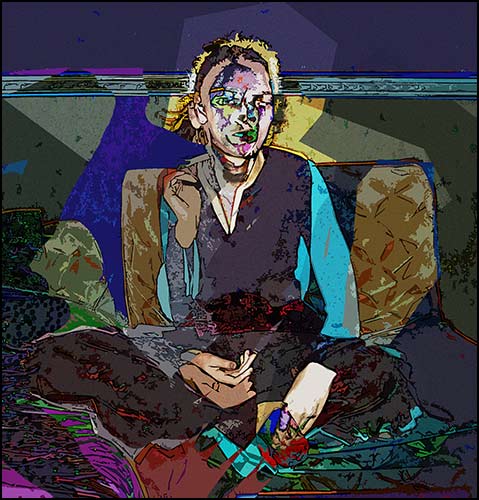
‘Figure #4’ – 2008
“I’ve always thought that imperfection, more than anything else, made a subject interesting.”
You have referred to ‘Hello Mrs Romberger’ as a pivotal moment. Why is that?
That painting was a defining moment when I was investigating the early aberrations. I was struggling with aspects of digital noise and other imperfections. Suddenly Mrs Romberger came along! I’ve always thought that imperfection, more than anything else, made a subject interesting. And there right in front of me was imperfections overwhelming the subject.
What particular aspect drew you to this bizarre imagery?
They were like spectres, elusive, indefinable but always there in the image. Just below the surface. I realised they just needed bringing out.
For some reason I have lost the original file and only have a tiny scaled down copy. I’m not too concerned actually; the important thing for me is the directions it has suggested I should take.
It would be very instructional to see a before and after. As in the photo you took and then the finished piece.
The final work is what it is. It stands alone and is not a record of the distance achieved from the original. I think making comparisons or playing spot-the-difference would seriously detract from it.
I want to stretch the relationship between recorded and constructed images. I have really tried to utilize this with the One Million Nudes series. All the paintings in that series are directly related to a single photograph. Those paintings are driven by the distance from the original image. Diversity of the final images is the interesting part for me.
Most of the early work looked abstracted, even though it wasn’t. More recently I have tried to maintain more recognizable imagery. The piece ‘Figure no.4’ for example, was assembled from many time layered images of artist Francine Schokker. I think the digital imperfections look quite beautiful, unusual even.